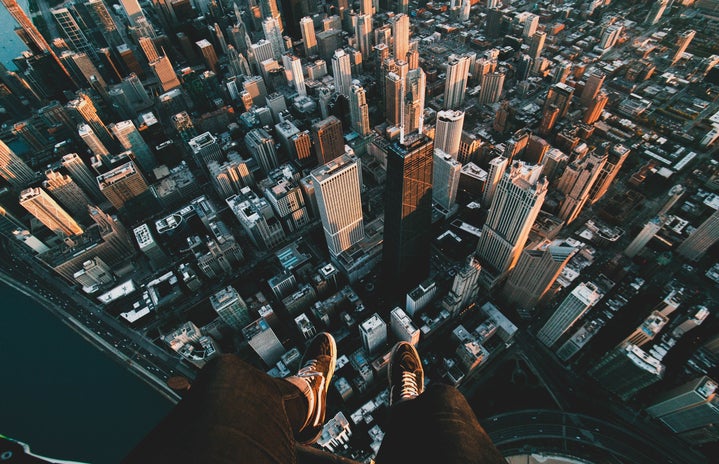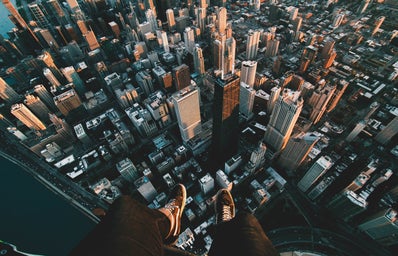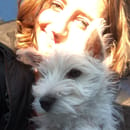Walking along Fifth Avenue after class earlier this week, I watched as a middle-aged man grabbed a handful of yellowish-white birdseed from a plastic bag, and dumped it onto the edge of the sidewalk. I flinched as a flock of pigeons flew diagonally towards the sidewalk and descended onto the pile of feed. Soon after taking a few steps forward, I halted. A man’s deep voice reverberated through the air.
“Don’t do that. Come on!” the man scolded. The man gesticulated widely as he approached the man with the birdseed and admonished him. The man with the birdseed opened his mouth slightly and attempted to defend himself, his voice notably lower than the other man’s. I crossed the street before I could see whether the confrontational interaction escalated any further.
I’ve been cut off on the sidewalk by pigeons as they’ve beelined to crumbs left behind by outdoor diners. In their hurried attempts to find comfortable perching spots, their wings have nearly brushed against the side of my head. They’ve flocked and flapped their wings assertively, as though to remind a newcomer like me of their well-established status in the city. Fortunately, I haven’t felt any pigeon droppings land upon my head or seen any on the soles of my shoes. I suspect that such an occurrence will happen at some point, especially since pigeons disregard the social distancing guidelines that the rest of New York respects (I’ll write an article if/when that happens. I’ll be sure to include a picture or description of the culprit so you know which pigeons to watch out for on the streets).
As though pigeons weren’t ubiquitous enough already, articles about pigeon feeding in New York now perch on a series of tabs on my computer and swarm through my search history. I became determined to find out which civilian was in the right: the bird feeder, eager to satiate the primal need to provide sustenance to another living thing, or the vigilant resident, eager to prevent the pigeons’ healthy egos (which they seem to carry in their flared chests) from getting any extra fuel.
After doing some research, I discovered that pigeon feeding is allowed in New York, so the bird feeder on Fifth Avenue wasn’t disobeying the law. In fact, the only animals that are allowed to be fed in New York City are squirrels and birds. According to The New York Times, the Parks Department does forbid the feeding of all wildlife in certain areas that are under its control. Some residents take advantage of their ability to feed the pigeons. They contend that pigeons rely on humans for food because they have lost their ability to forage and appreciate the opportunity to connect with nature in an urban area where there’s little of it. However, just because pigeon feeding is allowed doesn’t mean that every resident is in favor of it. Anti pigeon feeders claim that the reason that pigeons lose their foraging capabilities in the first place is because they are fed by people. Whether pigeon droppings pose a risk to humans has been debated as well, with some asserting that droppings create a health hazard and others maintaining that there is little evidence that pigeon droppings cause disease in humans.
In February of 2019, these arguments were rekindled when the Parks Department issued a proposal to make it illegal to feed all wildlife in the Parks system. If the casual sidewalk interaction about pigeon feeding that I witnessed was divisive, I can’t fathom the squawking and ruffled feathers that the March 2019 public hearings about the proposal must have created. The Parks Department and their supporters argued that feeding wildlife attracts rats, leads to belligerent interactions between humans and animals, poses a health hazard to humans, and causes overbreeding. Pigeon feeding aficionados responded by protesting outside the Parks Department headquarters in Central Park, and created a Change.org petition that generated 4,450 signatures. They argued that birdseed does not attract rats, and that bird feeders can ensure they keep feeding sites clean. Mayor Bill De Blasio sided with the pigeon feeders and expressed concerns about the proposal. It appears the proposal was not approved by the Law Department, and that pigeon feeding is still allowed.
Pigeon feeding is a contentious topic that reflects people’s aversions, attachments, and stances on animal and human well-being. I’d like to think that after I walked away from the two men that day, the anti pigeon feeder explained a previous encounter with an aggressive pigeon that sparked his concern about pigeon feeding, and that the man with the birdseed perhaps told the other man that he knows the pigeons that frequent the spot depend on him because he has been feeding them for years. So long as the Parks Department permits it, we should let birdseed nourish not just pigeons but discourse among city inhabitants. For every pigeon beak that pecks at a pile of feed, two or more human mouths can open.


